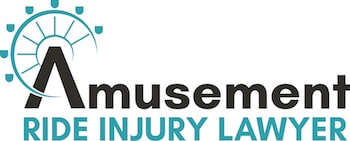The Difference Between Liability and Negligence Claims
There are two different claims that you can make in a personal injury case. You can either claim that it was the fault of something damaged or defective that caused your injury or it was the fault of someone else’s negligence. For the sake of this topic of amusement parks, liability would be a damaged or defective ride and negligence would be the fault of the park’s employees or staff.
Liability Claim
In order to have a liability claim, the product has to be defective in some way. The elements that a liability claim must have are that you suffered a loss and were injured, the product or ride was defective or damaged in some way, the defect was what caused your injury, and you followed all the rules and rode on the ride as it was intended. If you suffer an injury on a ride that was not a foreseeable injury, and was due to a damaged or defective part, you may likely have a good liability claim.
When someone goes on an amusement park ride, they are obviously aware that there are risks of injury when riding. However, if there is a safety belt that doesn’t fasten or a safety bar with a screw missing, the rider cannot assume the risk of injury from the faulty rides, if they do not know about them. Damages and defects to the ride are not part of the foreseeable risk, unless the rider is warned about them.
Negligence Claim
In order to have a negligence claim, someone’s actions will have been the cause of injury. Negligence includes two factors, which are that someone does not use the level of care that is expected of a reasonable person and that they caused harm to someone else. Negligence also has three different factors that must be proven:
- The person in question had a duty of care towards the person injured and that they breached that legal duty.
- The person in question, and their actions were the cause of the injuries sustained by the person in question.
- The person injured sustained physical, emotional, or financial loss.
How to Gather Evidence for a Liability or Negligence Claim
For a personal injury case, the first piece of evidence that you and your attorney will need to gather is evidence that an injury occurred. This evidence may be physical, meaning, if you broke your arm, you may have a cast to prove it. However, many times a personal injury case may occur after you no longer have physical proof that you have been injured. You may already be healed from your injuries, or your injuries may not be visible. If so, you will need photographs of the injury, x-rays, medical records, etc. that prove that you were injured. This is why documenting everything after you have been injured is very important.
Next, you will want to collect evidence about the location at which you were injured. This might mean returning to the location and taking pictures. If you were injured at a waterpark, you should go and take pictures of the park, the ride, and location that you were injured.
Collecting evidence of any police reports, accident reports, and witness contact information is also critical for a personal injury case. If there was a police report made, these documents will need to be located, as well as any accident report made by the park or carnival that you were injured at. If you recorded the names and contact information of a ride operator or any witnesses to your injury, this is also important evidence that can be used to call witnesses.
Getting Help
Going through a personal injury case and collecting evidence for a liability of negligence claim can be very overwhelming. The best way to approach the situation is to call and speak with an attorney about your case. An attorney can take the responsibility of handling your case, collecting evidence, and being your advocate during this stressful time.

